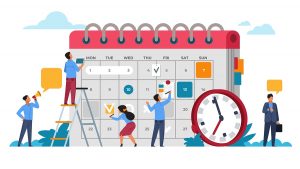
For years, government has worked to streamline acquisition so needed technologies get in the hands of agencies more quickly. With the new administration's focus on efficiency and improved use of emerging technology, these ongoing efforts to evolve government acquisition will likely move into high gear.
Legislation Driving Change
2024 saw a number of bi-partisan legislative proposals aimed at streamlining acquisition and spending. The Federal Improvement in Technology (FIT) Procurement Act was introduced in March 2024 to eliminate restrictive requirements and expand procurement options that let agencies move quickly to buy and utilize technology. A key focus of the legislation is enabling agencies to make advance payments for cloud computing, data center solutions, and other technology acquired on a subscription or tenancy basis. A pay-in-advance model is standard for these technologies, but not something that government procurement rules are set up to easily allow. Continue reading




 Recent security breaches via software have made supply chain security a priority across government. No longer is it enough to build security into a solution; now every product that is part of that solution is being examined for its security and risk. In response, the Biden Administration issued a Cybersecurity Executive Order that aims to provide more control over the content of code that comes in contact with government systems and infrastructure.
Recent security breaches via software have made supply chain security a priority across government. No longer is it enough to build security into a solution; now every product that is part of that solution is being examined for its security and risk. In response, the Biden Administration issued a Cybersecurity Executive Order that aims to provide more control over the content of code that comes in contact with government systems and infrastructure.
 With many people in a rush to put 2020 behind us, those of us in the government market can safely say we're operating like it's 2021 (not as fun as partying like it's 1999, but anything beats 2020, right?). While the rush to meet the deadline for federal government fiscal year (GFY) spending on September 30 may have felt oddly comforting in its familiarity, there are
With many people in a rush to put 2020 behind us, those of us in the government market can safely say we're operating like it's 2021 (not as fun as partying like it's 1999, but anything beats 2020, right?). While the rush to meet the deadline for federal government fiscal year (GFY) spending on September 30 may have felt oddly comforting in its familiarity, there are 
